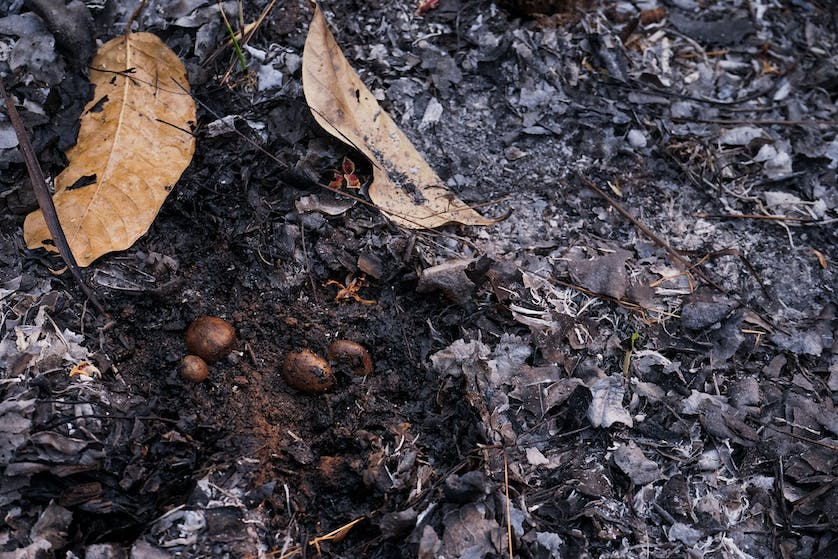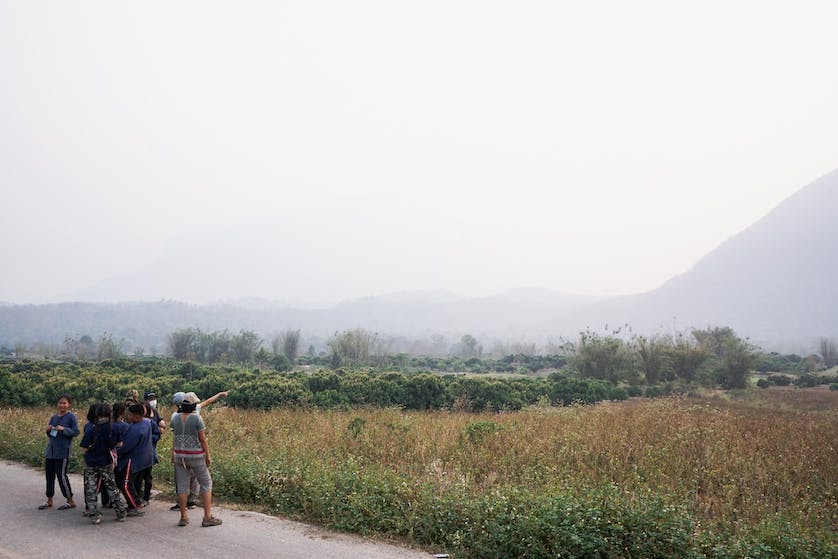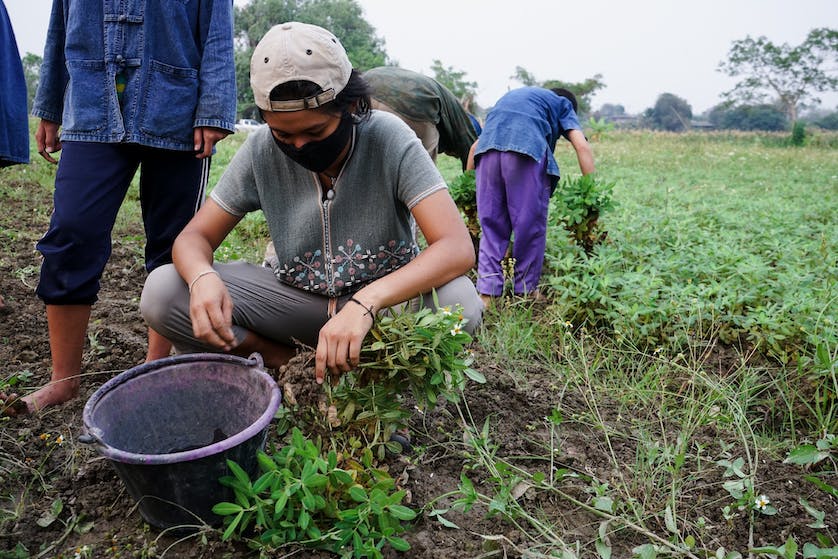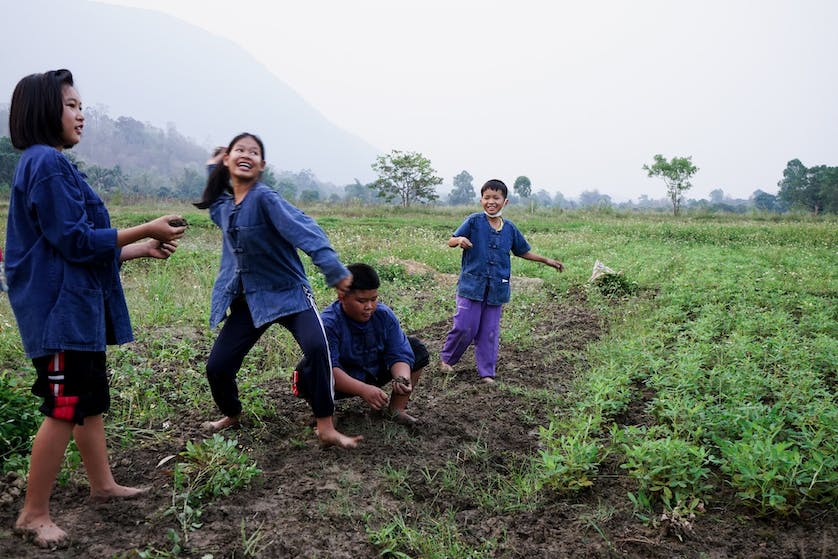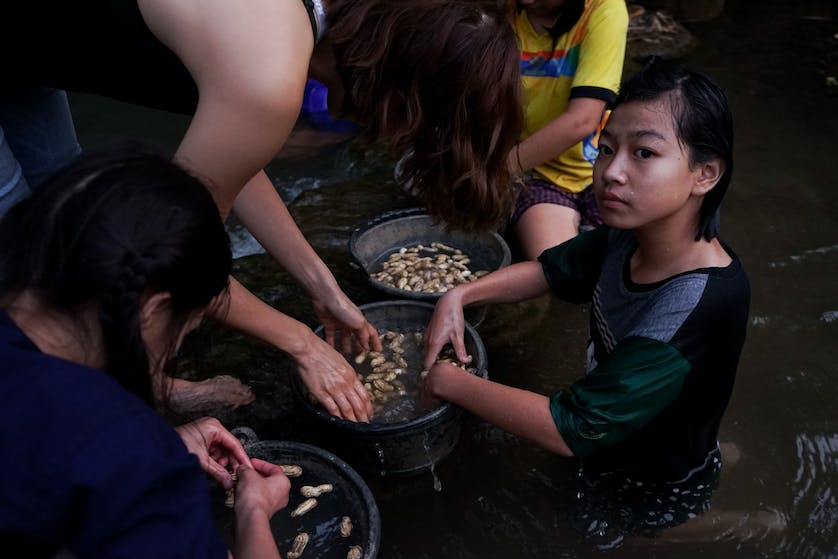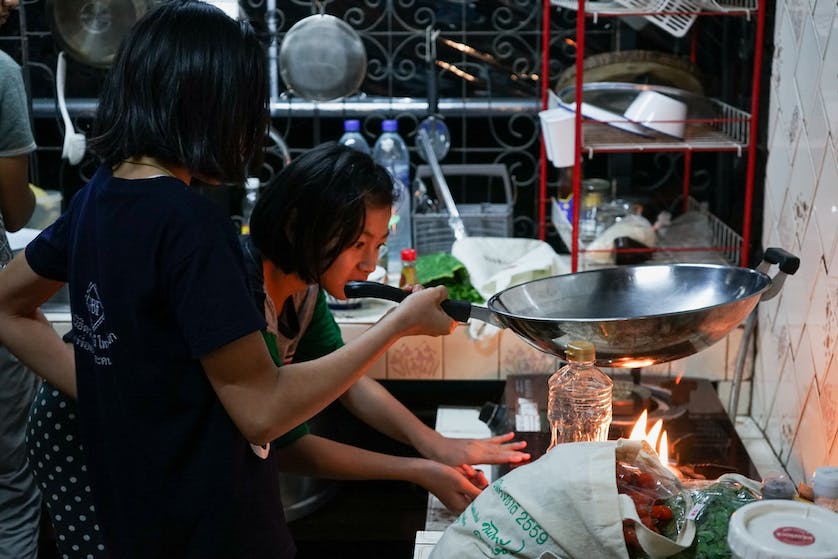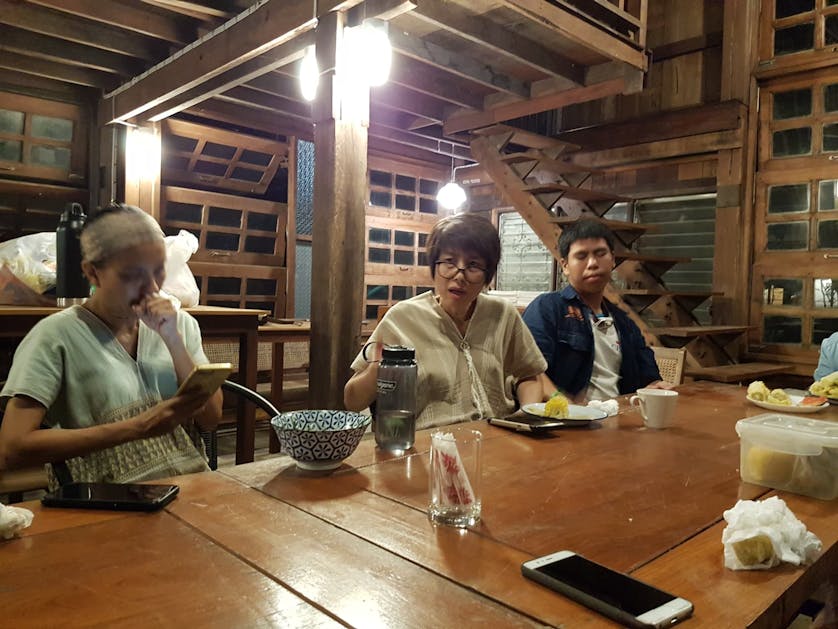After an hour of being lost and confused, we found ourselves in a crowded room filled with piles of boxes and donated goods at Chiang Dao Wildlife Conservation Office. We were told that there would be a local-led activity addressing the smog issue here in Chiang Dao, and following reports on the recent fire calamity on Doi Luang Chiang Dao that lasted for days, we thought it was a great opportunity to visit.
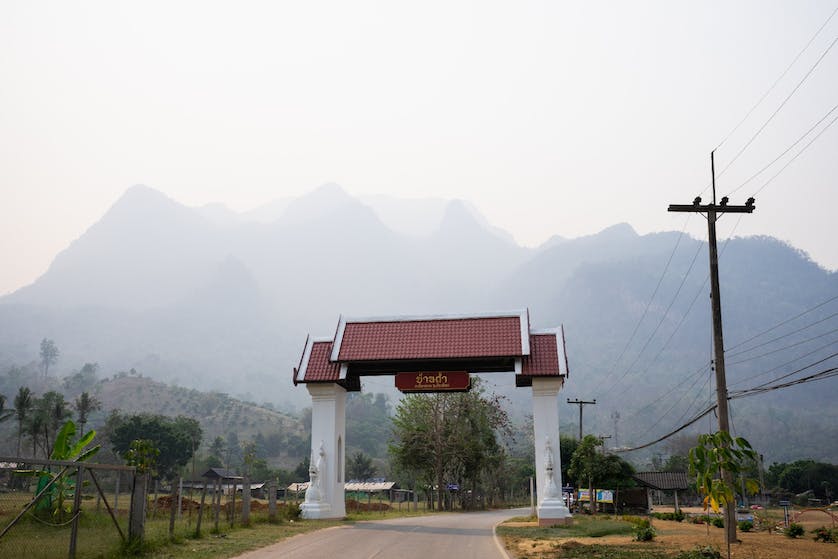
At the forestry office, we joined a team of volunteers led by Jirawan ‘Kru Mon’ Khamsao who is known for being a leader in improving local agriculture with organic farming. Her student team and students, Gang Thin Niyom, a group of teens, were laughing and teasing each other while sitting g through donated goods as we arrived.
It took us a short while to realise that a big-name social influencer Pearypie, celebrity Mint Mintita and a renowned Thai author Songkalot Bangyikhun had came all the way from Bangkok and were among the volunteers.
We first stopped at a deciduous dipterocarp forest where Kru Mon showed us how easy it was to find puffball mushroom on the forest floor when all the dried leaves were burnt, then we went to a sweet corn field filled with left over produce that was waiting for an elephant camp to collect. Kru Mon explained that after harvesting rice, farmers will fill the plantation with corn. The fact that both of them are monocotyledon, means that the land becomes degraded. A better option is to plant dicotyledons like peanuts. We walked from the corn field to the peanut farm and got our hands and feet dirty with mud. In the background was the shadowy silhouette of Doi Luang Chiang Dao and Doi Nang Non, even though we were only a few kilometers away of the mountain. We washed up at a stream where the teens jumped right in like it was a swimming pool at home, made a stop at local shops and finally arrived at our resting place for the night. Later that night we started an adult round table discussion on the pollution issue.
“All the forest fires in Thailand are manmade,” said Jiraporn Meewasana of the National Parks, Wildlife and Plants Conservation Department (Chiang Mai Office) who joined in to share her knowledge. “The reason is due to the humid weather unlike in the west, where it is very dry so that leaves can be easily sparked”, Jiraporn explained. Speaking from her experience working as a forestry office for decades she pointed out another interesting factor for burning other than crops and hunting, both of which are commonly known. One reason, she explained, is to punish the officials. “If we [forestry officer] arrest them for hunting for example, then there will be a fire. So to be honest during this season we have to be extra careful of arresting or punishing villagers,” explained Jiraporn. There is also the burning from personal interest like making a fire break. Jiraporn tells a story of witnessing a straight line separating a farm and the forest that was consumed in flames.

“The truth is it is always the same people who are the fire starters, and we all kind of know who they are,” said Maam of Maun Jai Natural Agriculture group whose dedication is to improving lives of Chiang Dao farmers. The ignorance of the people is a major topic that the group wishes to change. Those from Bangkok raised an alarming point that this haze seems irrelevant to them and that they knew next to nothing of the situation until they were here with us. “Not just Bangkok people, the people here too don’t realise how bad it is. The day Chiang Dao reached over 500 [AQI] they just lived their lives normally without wearing masks!” said Maam in concern. Another member of Maun Jai Natural Agriculture group pointed out that the way officials handle the situation is mainly by enforcing their power without really trying get to know the people, a good point that helps explain all the ineffective burning bans. Kru Mon added other failed attempts by the government, telling the story of a policy that rewards villagers that don’t burn. “It turns out another village nearby was jealous and set a fire at our village,” said Kru Mon. Another failure is the compensation given to the volunteer firefighting teams. “Eventually, those who don’t receive compensation accuse others of being responsible, so we stop receiving that kind of money.”
Corn crops were mentioned only a little at the table as it was too big of an issue and the group is focusing on what they can do on a local level. “We can not all rely on the government, this is something we need to do ourselves,” said Kru Mon who is thinking of putting together a model forest where puffball mushroom and wild ingredients can be hunted without having to start a fire. Pearypie and Mint, the two influencers were asked to help raise awareness on the issue. Maun Jai Natural Agriculture group has a ten years plan to convince farmers to replaces crops and do organic farming. But this not only about villagers, we too need to change and assist in anyway we can. By choosing sources of our food carefully is the easiest way to start I think.

